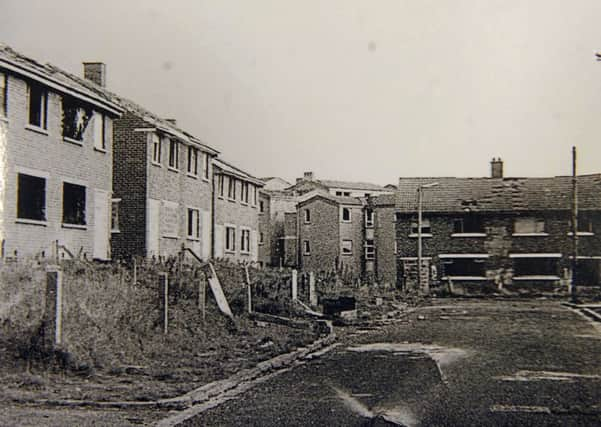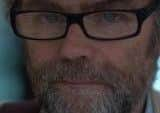Ballymurphy massacre film '˜does not tell the whole story'


The film ‘Massacre at Ballymurphy’, screened on Channel 4 at the weekend, contains personal stories from relatives of the 10 people shot dead in west Belfast by members of the Parachute Regiment between August 9-11, 1971.
A Catholic priest and a mother-of-eight were among those killed during the three days of violence. An eleventh man died of a heart attack following an alleged violent confrontation with troops in the west Belfast estate.
Advertisement
Hide AdAdvertisement
Hide AdBut journalist and author Malachi O’Doherty said the film offers “very little contextualisation” in terms of the paramilitary organisations that were active in the area during that time.


In a heated exchange with filmmaker Callum Macrea on Radio Ulster today, Mr O’Doherty said: “In terms of the events in Ballymurphy, we know there was significant IRA activity in the area on those days.
“Leaving out the whole context of the major gun battles taking place in Ballymurphy at that time was remiss and overlooked an important element of the story.
“The absence in the film of a credible account of what the IRA were doing at the time will be seen in retrospect as a hole in it.”
Advertisement
Hide AdAdvertisement
Hide AdWhile Mr Macrea acknowledged he had not ruled out the possibility that armed paramilitaries were present at the time of the killings, the film maker said he has found no credible evidence to suggest a gun battle had taken place between the British Army and Provisional IRA.
He told the Nolan Show: “No one can say for sure there weren’t any IRA gunmen there, and not for a second do I deny that.
“Of course the IRA were active in the area at that time. The British Army describe clearly a major gun battle, there were reports of 700 rounds of ammunition being fired at soldiers in one case.
“There were reports that the army fought a two-hour gun battle with as many as 20 gunmen. They talked about wiping out a hard core IRA unit.
Advertisement
Hide AdAdvertisement
Hide Ad“I have been looking into this for four years. There is not a shred of credible evidence that I can find – and I have looked hard – to say that any of that is true.
“Even though I can’t find the evidence I don’t rule it out and I specifically acknowledge it is possible.”
The film maker also claimed his film was a balance to a “false narrative” of the Troubles.
He added: “The official narrative that is widely held in Great Britain is that Protestants and Catholics were at each others throats, the Provisional IRA was an incredibly dangerous force and the British Army was sent as the patsies in the middle to restore peace. It is simply not true.
Advertisement
Hide AdAdvertisement
Hide Ad“When I tell people that the PIRA did not exist until several months after the British Army arrived in Northern Ireland, they are astonished.
“There is an entirely false narrative. My film is the balance to the official narrative, which is fundamentally wrong.”
Mr O’Doherty said he believed there had been “substantial IRA activity” in the Ballymurphy area at the time of the killings, that the IRA had fired on the Army, and that “trigger-happy Paratroopers had shot at people that they spotted in open ground”.
He added: “I do not believe you can tell the story of those events in such a way as to ignore the paramilitary activity.”
Advertisement
Hide AdAdvertisement
Hide AdWhen asked by Stephen Nolan if he believed those killed in Ballymurphy were innocent civilians, Mr O’Doherty replied: “I am inclined to believe they were all innocent civilians, I know nothing that would suggest otherwise.
“I agree that there is a lot to be said about the conduct of the Parachute Regiment. Whoever decided to put them into a residential area was a lunatic. It was a daft thing to do.”
Soldiers have long been held responsible for the killings at Ballymurphy, but the accepted narrative became clouded earlier this year when former UVF members came forward to claim their organisation was also involved.
The shootings took place as the Army moved in to republican strongholds to arrest IRA suspects in the wake of the introduction by the Stormont administration of the controversial policy of internment without trial.
Advertisement
Hide AdAdvertisement
Hide AdA new inquest into the Ballymurphy killings is set to start on November 12.
The fresh inquest into the shootings, had been due to formally open on September 10.
The new date for the inquest emerged during a preliminary hearing, sitting at Belfast High Court before Presiding Coroner Siohban Keegan, on Monday and comes after years of preliminary inquiries.
Counsel for the coroner said it will initially hear statements from the families of those killed before moving to hear evidence in the case.
Advertisement
Hide AdAdvertisement
Hide AdHe said they hope to start hearing evidence from military witnesses early next year.
Around 100 supporters gathered outside Belfast High Court on Monday in solidarity with the Ballymurphy families before the hearing.